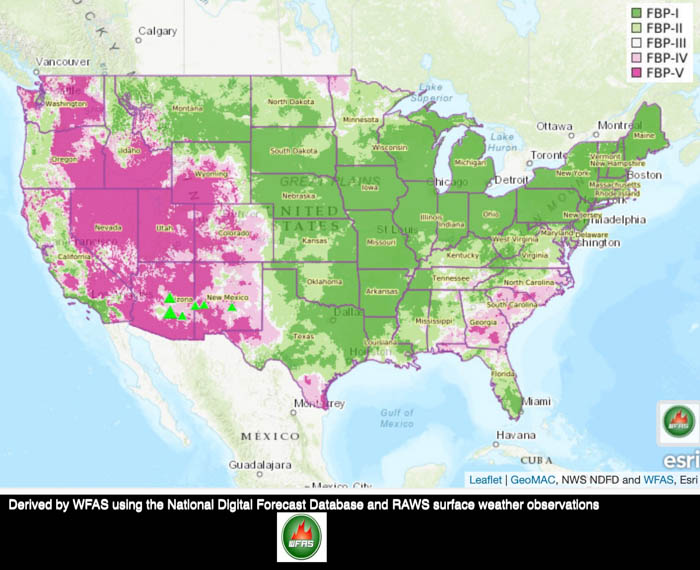
The wildfire danger is elevated in the Southwest United States today and will be higher on Friday.
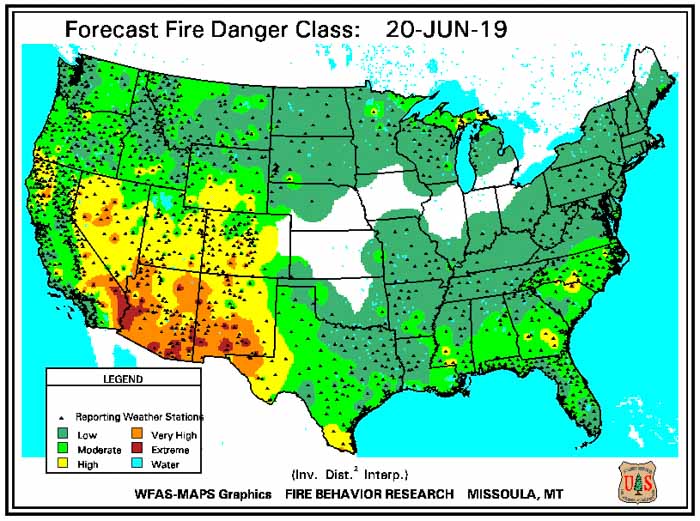
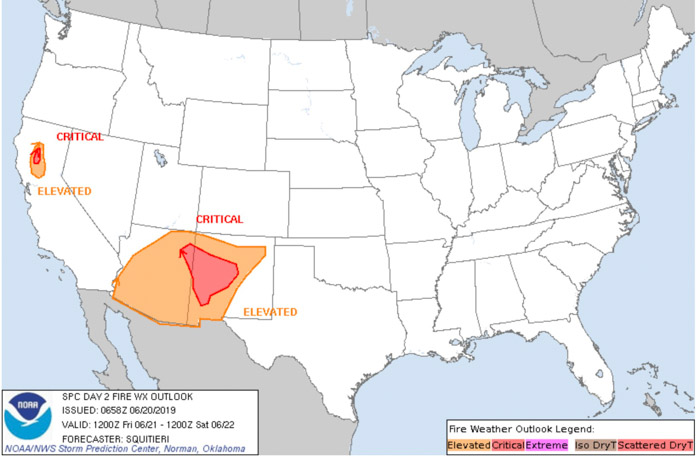
News and opinion about wildland fire
Part of the Forest Service’s mission is,”Providing work, training, and education to the unemployed, underemployed, elderly, youth, and disadvantaged in pursuit of our mission.”

The Trump administration has reversed their decision, for now anyway, to transfer the management of 25 Job Corps Civilian Conservation Centers from the Forest Service to the Department of Labor (DOL) and permanently close 9 of those 25 centers. The plans were to fire about 1,100 Forest Service employees and hire private companies to run the remaining 16 Centers. It would have been the largest reduction in the agency’s workforce in a decade.
A joint statement issued Wednesday night by the Departments of Labor and Agriculture read in part:
Following robust engagement with stakeholders and Members of Congress regarding the future of the USFS Job Corps centers, USDA has notified DOL that the USFS will evaluate the feedback while reviewing its role in Job Corps management and operation. For the time being, USDA does not intend to transfer these centers to DOL to allow management to determine a pathway that will maximize opportunity and results for students, minimize disruptions, and improve overall performance and integrity.
The decision to close nine of the Centers and hire contractors to run the rest provoked very strong reactions from current and former students at the Centers, Forest Service employees, a union representing the employees, citizens, and many politicians in states affected by the closures and firings. Even Majority Leader Mitch McConnell who supports virtually everything that comes out of the White House pressured the administration to rethink the transfer, closing, and contracting plan. Several congressmen introduced various pieces of legislation that would prohibit the implementation of the plan including Senator Jon Tester of Montana and Oregon Congressman Peter DeFazio.
The withdrawal of the gutting of the Forest Service Job Corps Centers, first reported by Politico, came about three weeks after Forest Service Chief Vicki Christiansen told a group of employees on May 24 that over 1,000 of them would be laid off.
The nine Centers that were going to be permanently closed were in Montana, Wisconsin, Arkansas, Virginia, Washington, Kentucky, North Carolina, and Oregon.
Below is an excerpt from an article in the Washington Post published Wednesday night:
In a rare break with the administration, Republicans joined Democrats in fighting not just the shutdowns but the effort to hand over operations to private companies. The opponents included Rep. Cathy McMorris Rodgers (R-Wash.), whose timber-producing district on the Canadian border already is losing jobs, and Rep. H. Morgan Griffith (R-Va.), whose Southwest Virginia district in Appalachian coal country has yet to see the fruits of Trump’s promises to revive the industry.
With two centers in Kentucky on the closure list, McConnell wrote [Secretary of Agriculture Sonny] Perdue and [Secretary of Labor Alexander] Acosta a letter of protest, citing the loss to “distressed Kentucky counties with unemployment rates above the national average,” which “need more support, not less.”
In a separate letter signed by 51 Democrats and Republicans, lawmakers took issue with the administration’s claim that many of the centers announced for closure were poor performers.
The Job Corps centers, which are run by federal employees, help train youths in wildland firefighting, forestry, culinary arts, welding, construction, and other trades. Their official mission is to educate 16- to 24-year-olds, many of whom are from disadvantaged backgrounds, while helping U.S. conservation efforts on public lands. After graduating from the program many of the youths have training, skills, and experience that qualifies them for permanent jobs in government or private industry.
“Caring for the land and serving people.”
One of the elements of the Forest Service mission:
“Providing work, training, and education to the unemployed, underemployed, elderly, youth, and disadvantaged in pursuit of our mission.”
Thanks and a tip of the hat go out to Walt and Paula. Typos or errors, report them HERE.
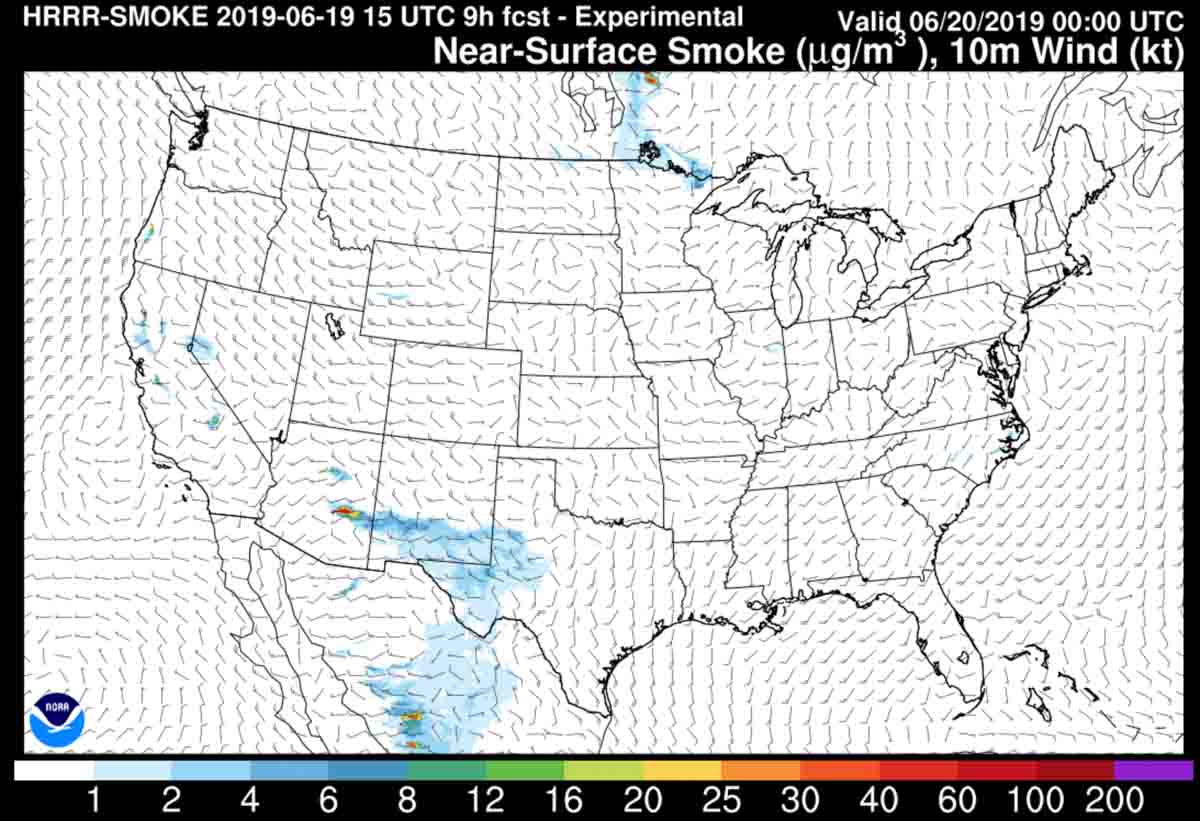
The smoke from the Woodbury Fire east of Phoenix is expected to blow off to the east Wednesday into Southern New Mexico and Western Texas. The map depicts the forecast for 6 p.m. MDT June 19, 2019.
The fire is 12 miles east of the Phoenix suburbs
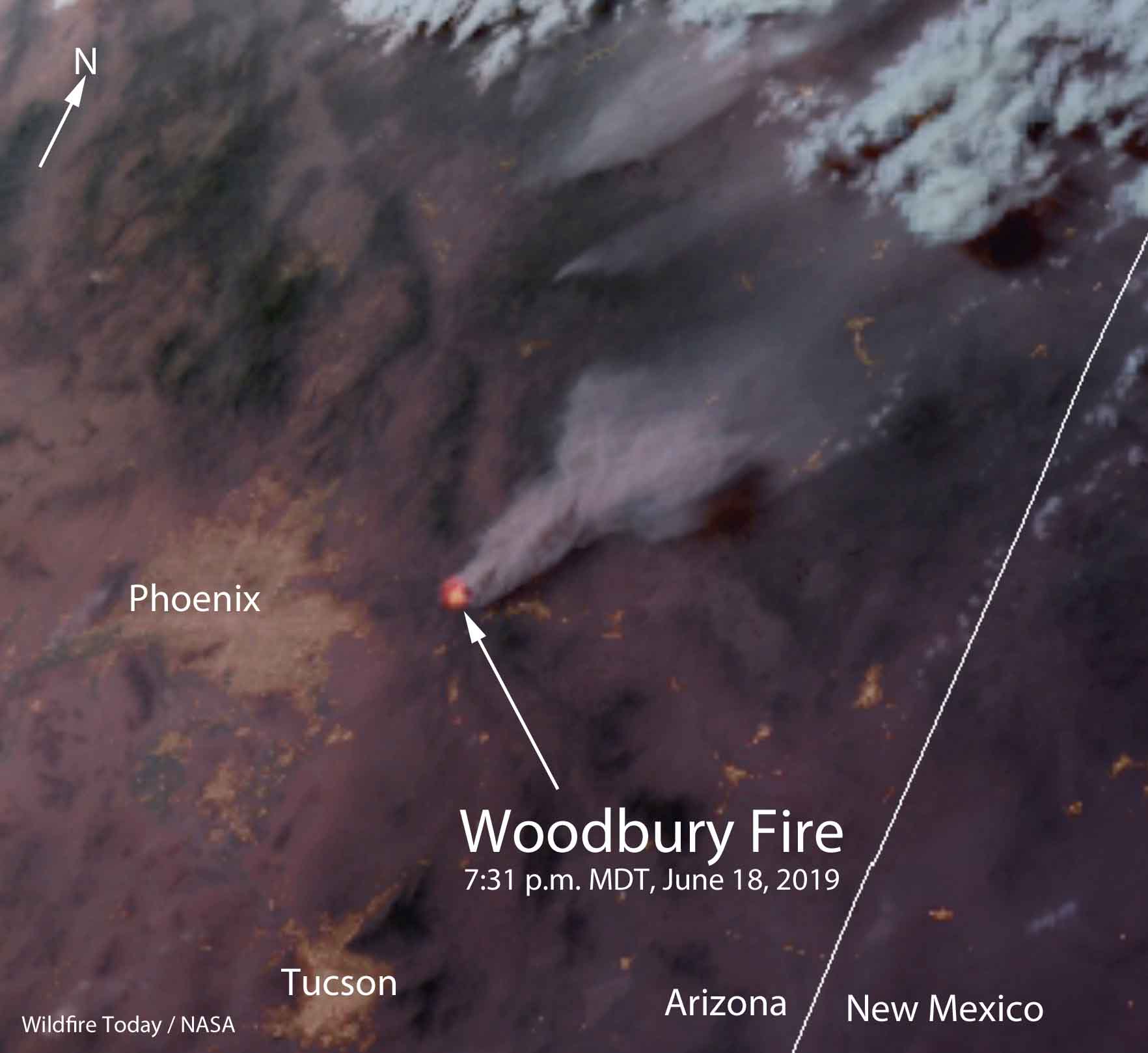
(To see all articles on Wildfire Today, including the most recent, click HERE.)
The Woodbury Fire 12 miles east of the Phoenix suburbs became very active on the northeast side Tuesday beginning at about 2 p.m., sending up another large column of smoke that blew off to the northeast. It added another 3,894 acres to bring the total up to 44,451 acres.
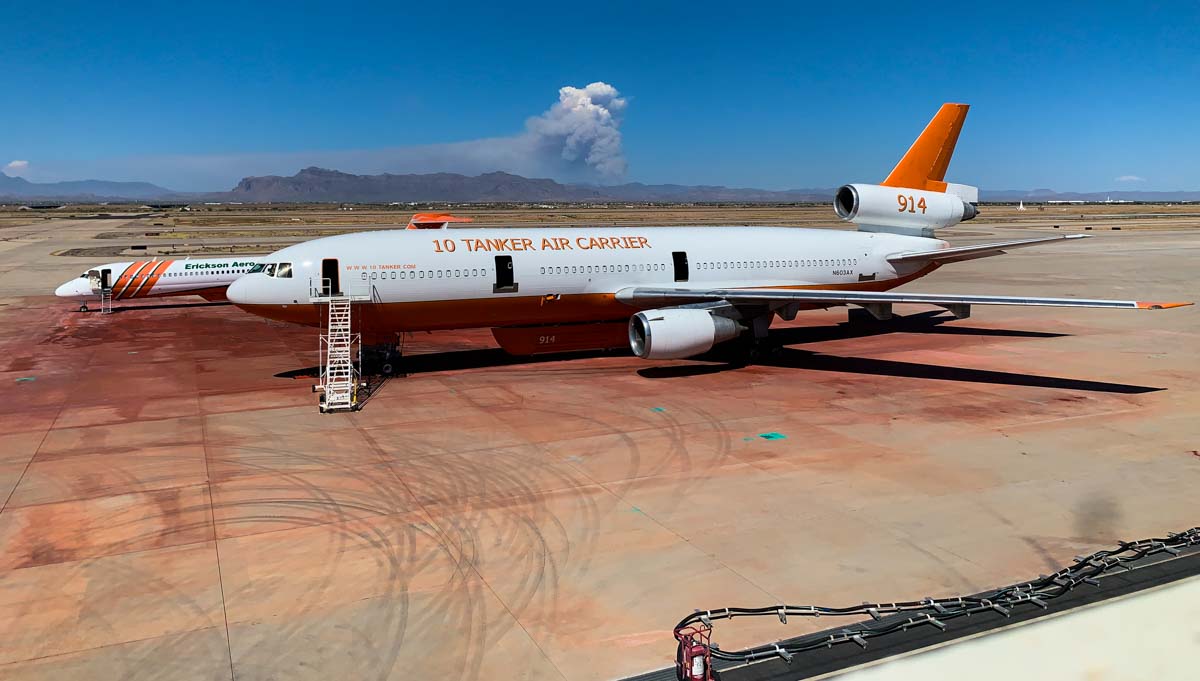
On Wednesday fire crews are preparing for the possibility of the fire moving north towards Roosevelt and east towards the Pinto Mine along Pinto Canyon. Firefighters will be using burnouts and existing black lines to divert fire from the Reavis Ranch, Roosevelt, and mining operations. They will continue the preparations along 500 KV power lines to make them more defensible, masticating brush and building bulldozer lines where appropriate.
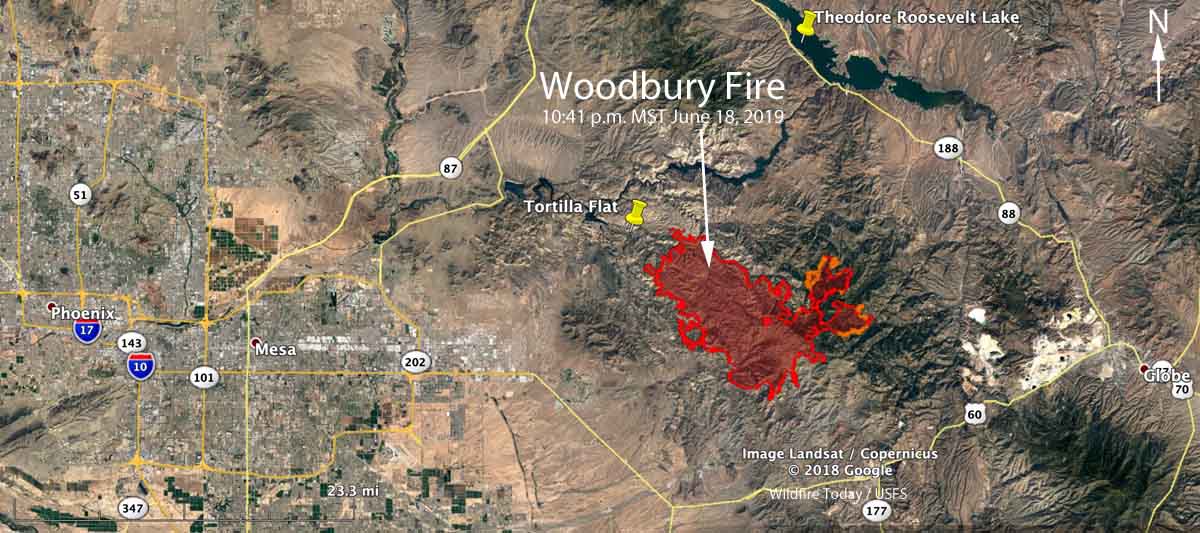
The smoke is expected to spread to the east on Saturday, becoming noticeable in Southern New Mexico and Western Texas.

The 40,000-acre Woodbury Fire 12 miles east of the Phoenix suburbs is large, but it is nowhere near as big as the five largest in the recorded history of the state, according to the graphic prepared by the Phoenix office of the National Weather Service.
More information about a couple of these fires: Wallow Fire and Horseshoe Two Fire.
(To see all articles on Wildfire Today about the Woodbury Fire, including the most recent, click HERE.)
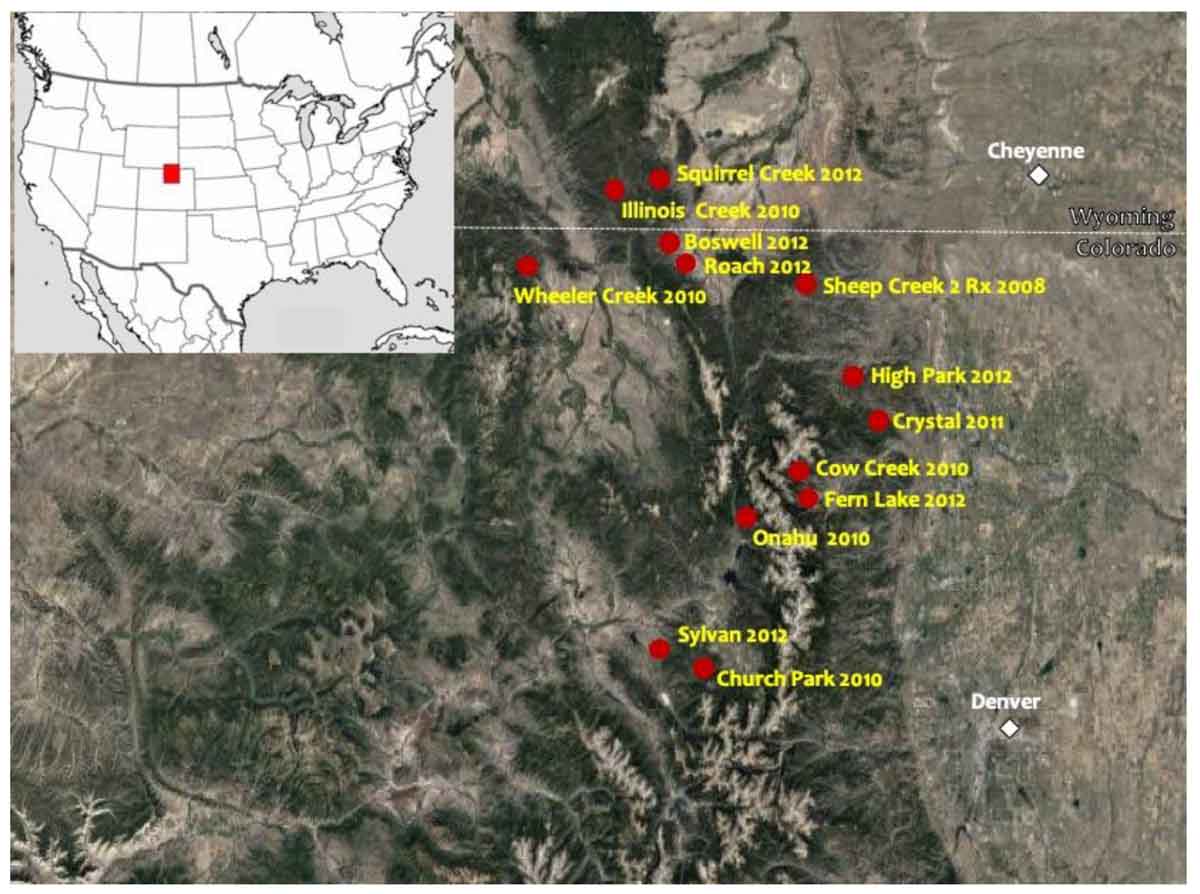
In 28 interviews of experienced wildland firefighters of seven different agencies in Northern Colorado and Southern Wyoming researchers asked them about their observations of fire behavior in beetle-attacked lodgepole pine forests, with a focus on what they considered surprising from a fire behavior standpoint and how this in turn affected their suppression tactics. The interviews focused on 13 wildfires that occurred during the 2010 through 2012 fire seasons.
Below is an excerpt from a paper written by the researchers:
“The surprises in fire behavior experienced by firefighters during the red phase of post-outbreak forests included an elevated level of fire spread and intensity under moderate weather and fuel moisture conditions, increased spotting, and faster surface-to-crown fire transitions with limited or no ladder fuels.
“Unexpectedly, during the gray phase in mountain pine beetle-attacked stands, crown ignition and crown fire propagation was observed for short periods of time. Firefighters are now more likely to expect to see active fire behavior in nearly all fire weather and fuel moisture conditions, not just under critically dry and windy situations, and across all mountain pine beetle attack phases, not just the red phase. Firefighters changed their suppression tactics by adopting indirect methods due to the potential fire behavior and tree-fall hazards associated with mountain pine beetle-attacked lodgepole pine forests.”